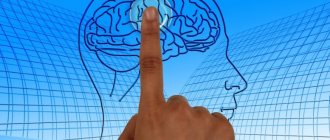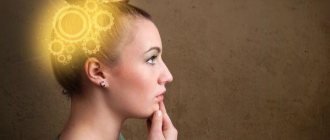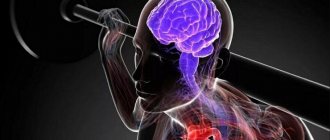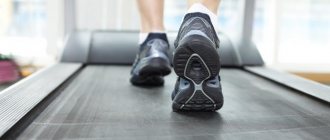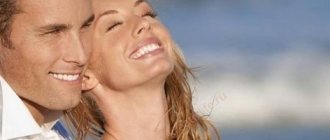Her intelligence simply throws everyone up to the ceiling.
Since science has come to grips with the structure and functioning of the human brain, it has been fairly reliably established that a decent portion of brain neurons are in an inactive state (in the sense that they do not have an output signal at any particular point in time). Thus, the belief that only 20 (16, 8, 1, 0.5) percent of the resource of the human brain is used has penetrated into scientific, and then into pseudo-scientific, parascientific, completely anti-scientific and, finally, fantastic literature. And, therefore, it would be nice to hit the brain so hard with chemistry or something else that all the neurons will work at once and to the fullest. As a result of this (well, as his overheated imagination allowed) the person:
- will become smarter than all the geniuses combined;
- will resolve all questions of existence at once;
- will acquire magical or psionic abilities;
- will open a portal to the Warp from which demons will climb;
- equal in strength to God;
- will move to the highest form of existence in the form of pure energy of consciousness;
- hang himself, having learned all the frailty of existence;
- brains will “burn out”;
- and so on, and so on, and so on.
In fact, if all neurons are active (giving a “1” output), this is called an epileptic seizure. This doesn't sound like genius.
Already in our time, the prevailing theory in science is that the so-called “sleeping powers” actually operate in standby mode. Neurons do not work constantly, some go into “sleep” or even die, others wake up, “all eggs do not lie in one basket,” all processes in the brain are duplicated many times over. “Users (as is known) are divided into those who do not make backups and those who already do.” Evolution has learned this rule a hundredfold over millions of years, and the reserve of free neurons is sufficient to preserve brain function even for those who survived a head wound.
- The point is not only (and not so much) in reserve capacity, but in the fact that the work of some groups of neurons necessarily inhibits (that is, “turns off”) the work of other groups that perform the opposite function. For example: when we bend our arm, the neurons responsible for this not only send an excitation signal to the corresponding muscles, but at the same time inhibit the neurons and muscles that are responsible for extension. Thus, all brain systems cannot operate at the same time in principle. It's like asking a car to turn its wheels forward and backward at the same time.
However, this does not prevent us from now making this theory the engine of the plot. There is a demand - of course, rather than poring over years in universities and bit by bit finding and systematizing the necessary facts, it is much more pleasant to dream of a “miracle pill” that will allow you to solve any problem in a few minutes and go smoke bamboo.
It is worth mentioning, however, that there is no fundamental ban on the creation of technology that would force all brain cells to work simultaneously and in the same direction. But the problem here is rather different: the theoretically calculated maximum computing power of the brain is not so great. You may become smarter (if you don’t go crazy), but you won’t outrun a supercomputer and you won’t learn to throw fireballs. Plus, an inevitable side effect is the extremely low fault tolerance of such a system. Plus the second side effect - even normal brain work eats up a lot of calories from the body (let's not forget that the brain, which makes up only 2% of the body's mass in a thinking state, consumes up to 25% of all incoming energy), and when overclocked, it most likely quickly will drive the body, at best, into a hypoglycemic coma, and at worst, into fatal overheating. So our “supergenius” will have to live on glucose drips and in the refrigerator.
- The subject is sometimes also understood as the consciousness-controlled autonomic (also known as autonomous) nervous system. But that's a different trope.
The brain overheats, so the person begins to yawn.
This hypothesis exists and is indirectly confirmed by the fact that people and animals begin to yawn more often in hot rooms.
But, to be honest, I’m not sure that this is the scientific mainstream, the generally accepted point of view. It is not very clear how one intense breath can affect blood temperature; it is generally quite tightly regulated. More interesting, in my opinion, is a group of explanations related to mirror neurons. These are cells that are activated in two cases: when we ourselves perform some action or when other people perform the same action. Yawning is known to be contagious. Then we can discuss why this happened. Perhaps this helps people in a community live more or less on the same schedule and not disturb each other's sleep. Let's say one child in the family starts to yawn, the others follow suit, and all the children thus fall asleep faster, and their mother can take a little rest.
How does the human brain work?
The brain is the most complex organ of all living things. Every moment he needs to process a huge amount of information and transmit signals to other systems of the body. Scientists have not yet been able to fully study its structure and functional features. In humans, the organ is responsible for such processes as: thinking, consciousness, speech functions, coordination, emotions, reflex functions.
The entire human body is penetrated by a network of nerves that are a continuation of the central nervous system. Through neurons, information from the brain disperses throughout the body and comes back for processing. All nerve cells create a single information network with it.
What percentage does the human brain work at?
Scientists have repeatedly tried to estimate how much the human brain works, and as a result of their research, many false theories arose in the last century. According to one of them, it was believed that a person uses only 3% of his potential, while others argued that 15-20 percent.
The Myth of 10% of the Brain
In 1936, in the preface to the book "" the American writer Lowell Thomas wrote "Professor William James says that people use their mental faculties."
Neuroscientist Barry Gordon characterizes the myth as "ridiculously wrong," adding: "We use virtually every part of the brain, and it's active almost all the time." Barry Beyerstein argues against the ten percent myth:
- Brain damage studies: If 90% of the brain is not normally used, damage to these parts should not affect its function. Practice shows that there are almost no areas that can be damaged without loss of abilities. Even small damage can have huge consequences.
- The brain is quite expensive for the body in terms of oxygen and nutrient consumption. It can require up to 20% of the body's total energy, while accounting for only 2% of the mass. If 90% were not needed, people with smaller, more efficient brains would have an evolutionary advantage - the rest would have a harder time undergoing natural selection. From this it is also obvious that such a large brain could not even appear if there was no need for it.
- Scanning: Technologies like positron emission tomography and functional magnetic resonance imaging make it possible to observe the functioning of the living brain. They showed that even during sleep there is some activity in the brain. “Blind” zones appear only in cases of severe damage.
- Localization of functions: Instead of being a single mass, the brain is divided into sections that perform different functions. Many years were spent defining the functions of each department, and no departments were found that did not perform any functions.
- Microstructural analysis: When recording the activity of individual neurons, scientists observe the life activity of a single cell. If 90% of the brain was idle, it would be noticed immediately.
- Neuronal diseases: Brain cells that are not used tend to degenerate. Therefore, if 90% of the brain were inactive, then an autopsy of an adult brain would show massive degeneration.
Another argument is that a large brain size requires an enlarged skull, which increases the risk of death at birth. Such pressure would certainly rid the population of excess brains. Thus, it turns out that we use 100% of the brain as a whole, but each task uses its own area and much less percentage.
Where does the 10 percent myth come from?
In an article published in 1907 in the journal Science [2], psychologist William James argued that people use only part of their mental resources. However, he did not specify the percentage. This figure was mentioned in Dale Carnegie's 1936 book, How to Win Friends and Influence People. There is an opinion among scientists that neurons make up about 10% of brain cells [3]. This may have contributed to the myth of 10 percent brain utilization. The myth has been repeated in articles, television shows and films, which explains why it is so believed.
Like any other organ, the brain is affected by lifestyle, diet and exercise.
Eating healthy foods improves overall health and well-being and reduces the risk of dementia, obesity and type 2 diabetes.
Refutation of the theory
Modern scientists, in particular, neuroscientist B. Gordon, have provided several arguments that completely refute the myth of 10% brain use. These include:
- During natural selection and the passage of stages of evolution, only the characteristics that were significant for a particular species were selected. If 90% of the brain did not perform any functions, then, accordingly, in the process of evolution, these parts of the central nervous system would disappear.
- Modern research methods, that is, various scans, make it possible to determine the absence of blind spots in brain activity. The appearance of inactive areas is observed only in individuals who have some kind of brain damage.
- It has been experimentally proven that each part of the brain is responsible for a specific function. If a part of the brain is damaged, in any case, some kind of disturbance in central nervous activity will occur.
- It has been proven that every single brain cell is functionally active.
- In the course of research, it turned out that non-use of any part of the human body (part of an organ or even a limb) leads to its atrophy, and in some cases to replacement with connective tissue. If there were inactive areas in the brain, they would atrophy or degenerate.
How developed is the human brain?
“The world is small, but the human brain is vast.”
There is still no exact data on how actively a person uses his brain. All that remains is to speculate and build theories. To make it clear how individual the brain activity of each person is in a certain situation, an example should be given. If a second grade student and a high school student are asked to add a two-digit and a single-digit number, then, naturally, the high school student will do it faster. However, it is the primary school student who will use the brain’s potential more actively, since it requires more effort to solve the problem. Based on this example, we can conclude that the development of the human brain does not consist of an increase in the number of cells or their size, but in an increase in the number of connections between them.
Another example is the behavior and perception of a person in an emergency situation, when the person's brain is activated much more than in everyday life. Eyewitnesses who survived the disaster claim that the world around them seemed to freeze or slow down so much that they had time to escape. If the brain were so active every day, it would require several times more energy, and therefore nutrients.
For normal functioning, the brain requires about 100–120 grams of glucose daily. For people whose profession involves mental work, a larger amount may be required.
The only thing that can be said for sure about the work of our brain is that not a single person has yet reached the limit of its development. Initially, at birth (in the absence of deviations), everyone has approximately the same developed brain. In the process of life, its further development will depend on individual characteristics:
- The social sphere in which a person is located;
- The opportunities provided to him;
- Incentives for development and so on.
Ashwagandha
Another healing plant that we became familiar with thanks to the Indian health science of Ayurveda is called ashwagandha. Translated from Sanskrit, this word means “horse smell,” and this name is explained by the fact that cattle like to graze in the thickets of ashwagandha, and the medicinal herb is strongly associated among local residents with horse health and endurance. Ashwagandha is sometimes called the Indian version of ginseng, however, the herb is much more accessible and therefore cheaper.
Local healers recommend ashwagandha to people engaged in hard work (and these are the majority in rural India), as this medicinal plant helps restore strength and save oneself from raging epidemics. Ashwagandha contains essential oils, glycosides, polysaccharides, terpenes and phytoncides, natural antibiotics that help the immune system cope with diseases.
After ashwagandha entered the European pharmaceutical market, it began to be positioned as a natural tonic and brain stimulant, as well as a means to improve male sexual function. There are plenty of antibiotics and immunomodulators in Europe, but there are very few plants that have such a pronounced positive effect on the brain and nervous system. Taking ashwagandha extract is recommended for students and mental workers, athletes and elderly people who complain of memory impairment.
Our brain sees 360 degrees
The brain can see better than the eyes.
And this opportunity makes us like Spider-Man. Yes, we, or rather our brain, are capable of very carefully monitoring our surroundings and reporting what we have not yet fully realized. For example, we begin to feel that someone is watching us. A feeling of awkwardness appears, we begin to sweat, and the skin becomes covered with goosebumps. We turn our heads in this direction, and we actually see that some person is looking at us. Some people call it the “sixth sense.”
We don’t have eyes on the back of our heads, and our field of vision is quite narrow compared to other animals. But the brain doesn’t need them there. It has a more effective means of assessing the environment. For example, hearing, which is capable of noticing even the most minor changes in the surrounding background. And this ability is especially enhanced when we cannot see part of this environment.
The brain likes consistency
If we want to achieve positive results, it is good to plan the work in advance. To do this, you can use the so-called small steps method. This technique is based on Japanese philosophy and has become widely used in business in recent years. It is ideal not only for high-level managers and executives, but also in everyday life.
Systematic and excellent organization is the key to success in any field. No matter what we do, we will achieve the best results in what we pay the most attention to. We can overcome any obstacle if only we skillfully plan our path to the goal and do not lack the perseverance to overcome it.
It is better to simply be well prepared for any eventualities and thus reduce the risk of making a mistake to a minimum.
How the myth was formed
Actually, no one immediately intended to distort the facts out of malicious intent - the whole point is that the journalists who picked up the scientist’s phrase did not particularly think about its true meaning, just as they did not really understand the work of the brain. This also cannot be considered their omission - after all, a journalist cannot understand everything, right? As a result, several articles were written about the “incomplete functioning” of the brain, after which more articles appeared, and so on - all according to the principle of a broken phone.
Let's now think about what it means to "use 10%" of the brain's resources. The mass of our brain is on average 1400 grams (on average). If only 10% actually works, it turns out that only 140 grams of the substance is useful. Well, if this is true, then we think with a part of the brain that is no larger than the brain of a sheep. Would you like to say, dear fans of the myth, that we are equal in mental development to sheep? Of course, we can’t take everything so literally—we’re exaggerating, of course we’re exaggerating. But there is a share of rationalism here, and it is clearly visible.
Additionally, let's think about what kind of equipment is needed to test what percentage of the brain is active while a person is awake. Can anyone really count all the working and non-working neurons? Let's rephrase the question: “Could scientists of the early twentieth century really count what percentage of the brain is working?” Yes, in 1908, when this myth began to be actively exaggerated, even radio was not particularly developed, let alone taking encephalograms or checking brain function in real time.
In addition, we know that if a person does not engage in active mental activity, does not train the brain, then the synapses connecting nerve cells, neurons, gradually degrade, and such a person’s memory and intelligence deteriorate, he may even forget the multiplication table. So if we don't use 90% of our brain for generations, is it still functional? Very unlikely.
Actually, the refutation of the myth was made not only by scientists of the past, who actively opposed rumors about “10%” among the uninitiated, but also by modern scientists, who actually repeatedly conducted experiments on tracking brain activity in real time - modern technology allows this.
It will probably be interesting for our readers to know that science is well aware of what tissues the human brain consists of, because its cellular composition has been very well studied. In addition, the anatomy of our thinking organ has been well studied, the main signaling pathways between its structures are known and defined (these structures can also be found in almost any textbook on neurophysiology). Scientists know how electrical activity occurs in the brain and how it is transmitted from cell to cell. But here’s the problem: science doesn’t know how the whole system works.
A curious situation, which, nevertheless, plays into the hands of many not very pure scientists and not scientists at all, who want to extract their own benefit from such ignorance. However, it has long been known that all brain cells are involved in work; this organ works constantly. At some moments, certain parts of the brain work more actively than others, but we are not talking about any 10%, 30% or 50%. The whole brain works, and this has been proven for a long time.
The brain is always working at full capacity
MRI
- Magnetic resonance imaging. It is used, as a rule, to identify diseases, tumors, and in general for the treatment and prevention of the brain. MTR also shows the areas of greatest brain activity at a given moment.
MRI shows that the brain ALWAYS WORKS EVERYTHING. It differs only in the activity of some areas. When you sleep, the brain operates in a simplified mode compared to when you are awake. All functions are reduced to a minimum, in fact, we only need to breathe and circulate blood, even metabolism, food digestion, everything slows down. During sleep, growth hormone is produced 5 times more, and who is in charge of all this? When you look at a picture and want to remember it, the brain is involved more than, for example, when playing chess. Amazing isn't it? It would seem that everything is the other way around. Chess players understand that sometimes you need to think about a move for a very long time and look 10 steps ahead, so why is the brain involved less than when simply memorizing a picture?
Yes, simply because when playing chess there is a framework limited by the rules of the game, limited by the field, and you are obliged to play by the rules. You have an emphasis on logic and forecasting + you retain the rules in memory.
Now let's see how you remember the picture. The spatial orientation of individual elements, colors, shapes of these elements, the nature of this picture, general perception (whether you like it or not) is only a moment of examination. You can also remember it in many ways, INCLUDING LOGIC, when you reason: “So, well, this is a picture of nature, the sky above, green trees, pebbles...”. Then, when you remember it, there will be the same sequence: “I think there were some trees and beautiful clouds there,” then the brain will also connect your imagination based on logic, “well, if this is a picture of nature, there was probably also green grass because it was clearly summer.”
Thus, when you look at a picture, you activate more neurons in your brain than when you play chess. Why is it more difficult for you to play chess? Because you see pictures all the time and your brain is trained on them from birth, but you are only partially exposed to chess, the neural connections are weak. It turns out that in chess only ONE part of the brain works HARD, which is physically smaller than those areas that work when memorizing a picture. Try walking backwards to front, your brain will also go nuts from this behavior and you will get tired much faster. The brain will tell you, through stress neurotransmitters, like “stop it, you look like an asshole, you will fall, etc.”
Another proof that fans of the theory of evolution will love! Why do we need such a big brain if it only works at 2, 6, 10, 15 percent (delete the excess). And really, the question is, what for? If this were really the case, it would decrease over time, because it’s a shame to work so badly. But what's going on? It is increasing, according to the conclusion of Japanese biologists K. Takahashi and I. Suzuki: “over the last 60-70 years of successful economic development, the average brain weight of the Japanese has increased by 30 g in men and 15 g in women.”
So, to summarize briefly: the entire brain works, but at different times and when solving different problems it has different activity. Imagine the Internet in your region at 20:00-22:00, this is the peak time for people to visit it. This does not mean that it does not work at night or in the morning. Below is a point that really makes you think!
Use self-hypnosis: “Every day I am getting better and better in every way.”
Autotraining allows you to make your brain work in the way you want. French psychologist Emile Coué
) is the creator of this famous mantra of positivity.
When you use positive attitudes, your brain begins to believe in them. We are all suggestible. If we weren't, marketing wouldn't be a billion-dollar industry. Get acquainted with auto-training, find a suitable positive statement for yourself. This practice can significantly change your life.
In contrast to the popular opinion that the ability to control oneself depends entirely on the strength of our will, Coue adhered to a different point of view. He believed that sometimes it is better to resort to the help of imagination to solve problems.
You can also add that it is better to pronounce instructions when your consciousness is quite weak, for example, in the morning immediately after waking up or in the evening just before falling asleep. Then the installation can immediately penetrate the subconscious, bypassing the control of consciousness.
How much does a person actually use their brain?
Modern neuroscientists answer the question of how the human brain works, unequivocally: 100%.
At any moment, the human brain uses all its resources to exercise control over the rest of the body's systems, to ensure the processes of remembering, thinking and awareness. And even when a person sleeps, the activity of the brain does not stop, because its different parts control the course of metabolic processes, heartbeat, breathing, and also process the information received during the day, thanks to which people see dreams. The human brain consists of two types of cells: neurons and glial cells, with the former responsible for receiving, transmitting and processing internal and external signals, and the latter ensuring the vital activity of the neurons themselves. Neurons and glial cells form 6 main sections of the brain, each of which has its own purpose and performs specific functions. These departments are as follows:
- Medulla oblongata – connects the spinal cord to the brain. This part of the brain controls breathing, salivation and stomach acids, and controls reflexes such as sneezing, blinking, coughing and vomiting.
- The hindbrain consists of the pons and cerebellum and is located in the back of the skull, above the medulla oblongata. Thanks to this part of the brain, a person can maintain balance, make meaningful movements and gestures, and also control his facial expressions.
- The midbrain is located on the other side of the cerebellum, under the hemispheres. This part of the brain controls the visual and auditory information channels, and also controls the tone of the eye muscles, the constriction and dilation of the pupils, and the spatial orientation reflex.
- The diencephalon is the area that is located in the lower part of the skull, under the midbrain. This small section contains such important areas as the thalamus (controls the change in states of wakefulness and sleep, receives and processes all signals from pain, temperature, tactile, olfactory, taste and muscle receptors), hypothalamus (controls blood pressure, heart rate, hormone production and the feeling of hunger), the pituitary gland (produces hormones of growth and puberty) and the epithalamus (regulates metabolism and biorhythms).
- The cerebral hemispheres are the left and right hemispheres, each of which has a frontal, occipital, parietal and temporal lobe. Different parts of the left and right hemispheres are responsible for memory, analysis of received information, critical self-esteem, speech recognition, perception and processing of what is seen and heard, synthesizing pieces of information, as well as motor activity of the limbs.
- The cerebral cortex is a neural network that covers the cerebral hemispheres and in which all mental processes take place.
According to modern scientists, if any part of the brain is damaged due to injury or disease, other lobes can expand their specialization and partially or completely “take over” its responsibilities in order to maintain the viability of the entire organism. And at the same time, neurons that are not involved in brain function die off very quickly, which once again proves the fallacy of the theory that the brain only works at 10%.
However, the fact that the brain of any person works at 100% does not mean that people cannot develop their intellectual potential. The fact is that when a person trains his memory, engages in mental activity, learns new information or acquires new skills, new neural connections are formed in his brain, which will be responsible for preserving the acquired knowledge and skills. And the limit to the development of such potential is unknown, because scientists believe that the number of neural connections and chains that our brain can create, if necessary, is almost limitless.
Sentinel in my head
- Intuition, inner voice, sixth sense - what is it?
— I think it’s the experience accumulated over a lifetime and a subconscious analysis of the situation. For example, a person sees signs of danger, but does not have time to fully understand what he sees. However, based on these signs, the brain gives a command with lightning speed, which we consider to be a hint from the inner voice. We can instinctively stop in the middle of the street or, on the contrary, sharply speed up our pace, noticing out of the corner of our eye an icicle or brick falling from the roof.
The human brain has a mechanism for comparing a real situation with a control one - that is, a certain matrix of stereotypes. Figuratively speaking, there is a sentry on duty in our head all the time, who collects the overall picture, processes it, consolidates it, and then monitors the current situation, checking whether anything has changed. If changes occur, a signal appears in the brain - vague anxiety, a feeling that something is wrong. Note: the brain does not say what exactly is wrong, but simply “spoils your mood.” The task of the “sentinel” is to monitor deviations from the standard and pay attention to them, and then let the person decide for himself what to do.
Question answer
What is the left hemisphere of the brain responsible for?
- But then why does such vague anxiety often appear long before the event? What is this - foresight?
- I’ll answer with a saying: “If Mr. Hussar goes to play cards all night, then during the day, when nothing has happened yet, his wife is already starting to worry whether he will lose to smithereens.” In other words, you roughly understand what bad things can happen, and you begin to worry in advance, assessing the chances of success. Foresight is an analysis of a situation.
— How great is the influence of human will, in your opinion? Where is the line beyond which she is no longer powerless? Or is a person capable of anything until he dies?
- Of course not, I’m not capable. This trait is a departure from the normal situation: a serious illness, serious injury, drug poisoning... The brain works well in conditions of stability. When emerging instabilities are kept within limits, he smoothes them out perfectly. But there are situations when nothing will help: there will be willpower, there will be no willpower - that’s all. For example, there are influences against which the brain is powerless: if certain substances are introduced into the body, for example psychotropic or narcotic substances, then resistance is almost impossible. There are legends about strong-willed intelligence officers who remained silent under any torture. But after treatment with special psychotropic drugs, a person loses his will and answers any question.
Question answer
What is the right hemisphere of the brain responsible for?
— You, among other things, explore the phenomenon of creativity in man - the “divine spark,” as they say.
If it's not a secret, on what devices is this done? — There are quite a lot of them: positron emission tomograph, magnetic resonance imaging, various devices using modern electroencephalography methods. We invite people to perform certain creative tasks - for example, come up with a non-standard phrase. And we see on the devices how the brain functions in this situation.
Creativity is perhaps the only activity that activates the entire brain. For example, when you are just having a conversation, the area of the brain near your temple is activated, and when you listen to a speech, the area is slightly behind. This does not happen with creativity, because the person does not know what resources will be needed to solve the problem. Oddly enough, the same neurons are involved in the process of thinking, in performing certain actions, and in controlling the functions of internal organs.
The last scientific monograph of my mother, Natalya Petrovna Bekhtereva, was written on the topic “Smart people live longer.” The famous gerontologist Vladimir Anisimov speaks about the same thing: scientists in those specialties where creativity is mandatory can often boast of their longevity.
Revealing the secrets of the brain. Natalya Bekhtereva knew the secret of longevity Read more
How information enters the brain
1. Initial information is sensory - it is perceived from the senses, and this is what we see, hear and feel
The more attention is focused on sensory sensations, the more information will be stored in memory. And attention increases when a person is interested in something
For example, if he constantly goes to work the same way, his brain seems to go into hibernation and is used at about 5%. If he changes the route, the brain “wakes up” to perceive new information
2. This type of sensory information is stored in memory for a very short time, because there is quite a lot of it received
The brain must separate the more important from the less important in order to move the more important from short-term memory to long-term memory. To do this, it is necessary that the different properties of the object combine and form an image
For example, in order to remember the name of a new acquaintance or his telephone number, it is necessary to associate the information heard and seen with his appearance, the circumstances of the meeting, etc.
4. The accumulated stock of images and concepts endowed with personal meaning allows for mental operations that allow one to penetrate into the depths of the problem and solve certain problems.
5. The form of thinking is a judgment (or statement) - a thought about an object in which its characteristics are revealed through denial or affirmation.
6. Based on judgments, a person makes an inference. For example, seeing puddles on the street in the morning, he comes to the conclusion that it rained at night.
Literature
- Herculano-Houzel S. The human brain in numbers: a linearly scaled-up primate brain //Frontiers in human neuroscience. – 2009. – T. 3. – P. 31.
- James W. The energies of men //Science. – 1907. – T. 25. – No. 635. – pp. 321-332.
- Herculano-Houzel S. The human brain in numbers: a linearly scaled-up primate brain //Frontiers in human neuroscience. – 2009. – T. 3. – P. 31.
- Edwards JD et al. Speed of processing training results in lower risk of dementia // Alzheimer's & Dementia: Translational Research & Clinical Interventions. – 2021. – T. 3. – No. 4. – pp. 603-611.
- Nielsen JA et al. An evaluation of the left-brain vs. right-brain hypothesis with resting state functional connectivity magnetic resonance imaging //PloS one. – 2013. – T. 8. – No. 8. – P. e71275.
- Corballis MC Left brain, right brain: facts and fantasies //PLoS biology. – 2014. – T. 12. – No. 1. – P. e1001767.
- Schreiner T., Lehmann M., Rasch B. Auditory feedback blocks memory benefits of cueing during sleep //Nature communications. – 2015. – T. 6. – P. 8729.
- Raichle ME, Gusnard DA Appraising the brain's energy budget //Proceedings of the National Academy of Sciences. – 2002. – T. 99. – No. 16. – pp. 10237-10239.
- Björkhem I., Meaney S. Brain cholesterol: long secret life behind a barrier //Arteriosclerosis, thrombosis, and vascular biology. – 2004. – T. 24. – No. 5. – pp. 806-815.
Only 10 neural connections are developed in the brain.
This is perhaps the most ambiguous and difficult to refute hypothesis. Neurons begin to communicate with each other immediately after we are born, and this happens as a result of mastering any skills.
For example, at birth, a child’s vision is very poorly developed, he is not able to distinguish colors and focus his gaze normally. All these skills come during the first months of life and develop precisely because the optic nerves increasingly develop their connection with the brain. The same process occurs with hearing, movements and our other abilities. Moreover, some particularly important skills may only develop in early childhood. It has been experimentally proven that if kittens are blindfolded for several months after birth, then after removing the blindfold they will remain blind. This happens precisely because during a certain period of time the connection between vision and the brain was not developed.
Have you ever wondered why children's toys are so bright and colorful? This is not done by chance, but precisely so that the child learns to distinguish as many colors as possible. Each of us has probably witnessed a situation in which one person thought that he saw a dark blue color, and another said that the color was just black. From this we can conclude that a person who sees dark blue has more developed vision.
A person develops neural connections throughout his life. This happens when we learn to play the piano, speak a new language, or learn new karate techniques. But the ability to develop neural connections gradually weakens, which is why children grasp everything on the fly, and adults sometimes need months to master the microwave.
It is absolutely certain that the human brain does not develop all possible neural connections, but there is no need to talk about any percentages here; it is stupid to even try to evaluate the functioning of the brain using numbers. After all, it is unlikely that there is a way to count all the possible skills and knowledge of a person, and it is even less likely that anyone is able to develop all of them in himself (imagine someone who knows and can do absolutely everything).
Some associate 100% development of neural connections with extrasensory abilities, but this is also very difficult to prove, primarily due to the fact that the very existence of such abilities has not been proven.
Listen to music!
High-frequency sounds (typical of baroque music, violins, guitars or harps) have a positive effect on the functioning of brain waves. In turn, low frequencies, typical of traffic or airport noise, deplete the brain and can only tire you. Many people can only concentrate in complete silence. Others benefit from the sounds of nature or calm music.
Other myths about the brain
Research shows that in humans, neither the left nor the right hemisphere is dominant, both sides of the brain are used equally. Many people believe that a person is either left-brained or right-brained, with right-brainers being creative and left-brainers being logical. Indeed, the hemispheres face different tasks. For example, the study authors believe that the left hemisphere is involved in processing language, and the right hemisphere is involved in processing emotions.
There is a myth that drinking alcohol kills brain cells. But everything is not so simple, the reasons for this are complex. If a woman drinks too much alcohol during pregnancy, it can affect the development of the fetus's brain and even cause it. Infants' brains may be small and have few cells. This can lead to learning and behavioral difficulties.
Research shows that subliminal messages can trigger an emotional response in people who are unaware that they have received an emotional stimulus. But can subliminal messages help you learn something new? A study published in Nature Communications found that recording vocabulary while sleeping can improve a person's ability to remember words. This was only the case for people who were already learning vocabulary. The researchers noted that receiving information during sleep may not help a person learn new things.
The human brain is covered in folds, the depression in each fold is called a sulcus, and the raised part is called a gyrus. Some people believe that a new gyrus is formed every time a person learns something new. This is wrong. The brain begins to develop folds before a person is born, and this process continues throughout childhood. The brain is constantly making new connections and breaking old ones, even in adulthood.
Now that we've debunked some common myths, here are some facts about the brain.
The brain makes up about 2% of a person's weight, but consumes 20% of oxygen and calories. Scientists estimate that the brain is 73% water
Dehydration of as little as 2% can impair a person's ability to perform tasks involving attention, memory and motor skills.
Everyone knows that cholesterol is bad for the heart. However, cholesterol plays an important role in the human brain. Without cholesterol, brain cells may not survive. About 25% of the body's cholesterol is found in brain cells.
Although there is still much to learn about the brain, researchers continue to fill in the gaps between fact and fiction.
Lecithin
The main organ of the nervous system, the brain, consists of one third of the phospholipid lecithin. Yes, the same one that we have strongly associated with the yolks of chicken eggs since childhood. The peripheral nervous system, by the way, also consists of 17% lecithin. The components of this substance are present in varying quantities in the cells and tissues of the entire human body and are involved in the synthesis of hormones, enzymes and mediators. This is why a lack of lecithin has fatal consequences: the functioning of all organs and systems is disrupted.
In the presence of pantothenic acid (vitamin B5), lecithin is transformed into acetylcholine, the most important neurotransmitter on which the speed of nervous reactions, the ability to concentrate, remember and analyze information depend. In addition, lecithin ensures more complete absorption of all fat-soluble vitamins (A, E, , K). It is the achievement of a healthy vitamin status that underlies neurodietology - the science of proper nutrition for the brain and nervous system as a whole. A person’s intellectual abilities, which are formed in infancy, directly depend on how well the body is supplied with vitamins.
During the first year of life, the baby receives huge doses of lecithin from breast milk. It is noteworthy that milk contains 100 times more lecithin than in the entire circulatory system of a nursing mother. If breastfeeding is not possible, you need to select a milk formula for the baby with the most optimal content of phospholipids. The speed of speech and motor development, resistance to stress, ability to socially adapt, and academic performance in preschool and school will depend on whether a child’s body receives a sufficient amount of lecithin in the first years of life.
An adult who is not only engaged in mental work or high-precision production, but also regularly exposed to stress and forced to concentrate for a long time (drivers, salespeople) really needs lecithin. By enriching your diet with this phospholipid, you will feel tired less often and will be able to prolong your youth and ability to work. Lecithin is found in large quantities in eggs, chicken and beef liver, fatty fish, seeds and nuts, as well as in all legumes, especially soybeans. It is from soy that most dietary supplements with lecithin are produced.
It is recommended that a child receive 1-4 grams of lecithin per day, and an adult – 5-6 grams. To achieve a pronounced effect, preparations with lecithin are taken for at least three months; only during this period can memory be significantly improved and mental performance increased. Lecithin has no contraindications; moreover, this valuable phospholipid will help you not only stimulate the brain, but also support the body as a whole.
Find out more:
Lecithin is another unique product
The roots of the myth
There is no exact data on where this legend originated, but assumptions have been made.
- At the end of the 19th century, W. James and B. Sidis, studying the abilities of a child within the framework of the theory of accelerated development, came to the conclusion that the human brain may not be 100 percent developed and its potential is great. After which L. Thomas, in the preface to D. Carnegie’s book, mentioned this assumption and said that people use only 10 percent of their brains.
- Some neuroscientists, based on research on the functioning of the cerebral cortex, answered the question “what percentage of the brain does a person use” - “at any given time - 10%,” which subsequently led to a truncated statement.
From that moment on, the legend became the basis for writing many fiction books and creating films. Some enterprising “psychologists” and “psychics” began to use it, creating trainings and courses that encourage them to unlock their potential.
The myth that the brain is developed or uses only 10 percent has proven to be tenacious due to its attractiveness - a person likes to believe that he can improve his brain, that he is capable of more and, perhaps, has supernatural abilities that “sleep” .
In fact
Numerous studies have been able to answer the question “what percentage of the human brain works.” They showed that when performing ordinary activities (light conversation, walking, listening to music) activation of absolutely all areas of the brain is required.
Other arguments in favor of what works 100%
:
- Moderate to severe traumatic brain injury always leads to impairment or loss of function. If the human brain were only 10 percent developed, then a person would not be able to notice any difference.
- He could not grow to such a large size as he is now. If only one tenth was used, it would amount to no more than 140 grams - which is approximately the size of a sheep's brain.
- It is an indisputable fact that 20 percent of the human body’s energy is spent on brain processes. This is a large amount, and it is unlikely that it would be allocated for the maintenance of a “sleeping” organ.
- No one, even the most brilliant scientist, could have calculated the percentage of working neurons at the beginning of the twentieth century due to the lack of such technical means.
Some argue that the brain is only 10% developed by accelerating and improving thought processes. However, they are associated with various methods of education and training, but not with the activation of “sleeping” zones.
So, to the question “how many percent of the brain does a person use?”, there is only one correct answer - 100. Using only 10 percent is impossible - the body must function all the time to maintain its activity. The myth remains very ingrained in the minds of many, and some experts argue that considerable resources are spent on maintaining it: the film industry, TV programs and shows often use it as a lure.
The human brain and its capabilities have interested people since ancient times. Until now, scientists are discovering new abilities of this organ, amazed at what it is capable of. People not involved in science have little idea about it. However, almost everyone has heard and believes that we are using only 10% of its capabilities. There is even a rumor among people that by activating it 100%, you can become a genius. Let's try to figure out what percentage of the human brain works .
When I was still at school, my mother often bought me various encyclopedias for independent study. One day I came across an article about the human brain
It revealed many features of this important organ, and since I was an inquisitive child, I wanted to know more. In my searches, I came across information that we use only 10% of what the brain is capable of.
Then the question arose in my head, what will happen if we activate everything 100%? Then I didn’t find the answer, so I decided to try to develop my mind on my own. I solved logical and mathematical problems and read. My lifestyle has been completely changed in order to achieve 100%.
Having grown up, I gave up the habit of doing exercises and forgot about my goal. But one day I came across that same article from childhood, and I again decided to find the answer to my question. Even when I found out that in fact we always use 100%, it didn't upset me at all. After all, during all this time I was able to develop my mental activity to the maximum, which turned out to be useful in my field of work.
The Internet simplifies the mind
— You once noticed that the Internet simplifies the mind. But is it? Finding answers to all questions on the Internet, people really often forget how to think. But on the other hand, the instant acquisition of any knowledge should enrich the brain...
— There are no abstractly bad and abstractly good things in the world. For example, drugs are definitely a bad thing, but without them it is impossible to carry out a single operation. Or, say, the atomic bomb - is it good or bad? She's nothing by herself. With its help, you can create giant underground storage facilities, or you can destroy cities. Or, say, shoot down a comet that is flying to Earth.
Honestly, I like reading a book more than watching TV. But I see - within reasonable limits. Television did not enslave me, did not make me dependent on the “box”. So, as a rule, a person does not become a drug addict; he is forced to become one. And if he gives in, he eventually dies. Drug addiction is a huge industry. And it’s the same story with the Internet. Nowadays, many very cunning techniques have been created to “disconnect” people from real life - including so that they do not ask unnecessary questions. And this, unfortunately, happens all over the world.
And in fact, based on this logic, why remember quotes by heart if everything can be found “with a click” on the Internet? Why read a book - it’s easier to watch a film adaptation... In fact, the trouble is already at the gate: we are not dumbing down our children, but we are simplifying their minds. The same cinema gives the viewer the plot of the work and destroys fantasy. You can no longer imagine the true images of Milady and d'Artagnan in Dumas. This is definitely Terekhova and Boyarsky...
Brain implant, conception chip. Is progress turning us into cyborgs? More details
What is good for the brain and its activities
The human brain performs many functions, so it requires more energy compared to other organs. Thanks to this, intelligence improves and new nerve impulses are formed. To stimulate the functional abilities of the organ, it is recommended:
- Read books. Changing genres will be useful, thanks to this your thinking will improve.
- Exercise. Physical activity stimulates the production of the hormone endorphin, which improves mental performance.
- Relaxing during the day will improve the process of assimilation of information.
- Sleep well. Thanks to this, it will be possible to improve concentration and memory.
- To refuse from bad habits. Smoking and drinking alcoholic beverages leads to the death of neurons.
- Follow the rules of rational nutrition.
- Do modeling and drawing. Such activities promote the development of fine motor skills, which improves organ function.
- To learn foreign languages.
Research data also indicates that communication helps improve brain function. Having sex also stimulates the release of estrogen, as a result the body copes better with stress and psycho-emotional overload.
Emotions control our brain
Due to the fact that emotions are closely connected with the mind, they can cause harm to it. Deterioration in the functioning of the organ is observed when a person thinks and sets himself up negatively. The brain is most vulnerable during the period of human development, from 2 to 10 years.
The essence of creativity is to keep your eyes open
One of the most famous mathematicians, Henri Poincaré, set a clock when he did not allow himself to be distracted. Every day from 10 to 12 am and from 5 to 7 pm. He devoted this time entirely to mathematics. Then in the evening he read everything, looked through books and magazines on a huge range of topics besides mathematics.
You would be surprised to know where the main ideas came from: it usually had nothing to do with the problem being solved. Literature, painting, music - clues to solving your problem lie in the most unexpected places. The main thing is to keep your eyes and ears open to new ideas, like Archimedes, who climbed into a full bathtub from which excess water spilled onto the floor. This is the essence of creativity.
Stress destroys nerve cells, which, in turn, are not restored.
Stress is indeed very harmful to the body. If it is strong, uncontrolled, and prolonged, then it can lead to disruption of a variety of systems: nervous, immune, and endocrine. Most likely, the death of nerve cells as a result of stress also occurs.
As for the nerve cells, most likely they are still being restored. In experiments on animals, for example on mice, we definitely see that yes. In the case of humans, it is more difficult to set up experiments to test this, and there is a scientific debate: some researchers believe that the accumulated indirect evidence is enough to be confident that new neurons are appearing. Others say that in children, probably, yes, but in adults, it’s unlikely. However, what is certain is that people at any age actively form new synapses, that is, connections between neurons. This is, in principle, the basis of learning and long-term memory.
Myth 10: New neurons stop appearing after birth
The last misconception we'll talk about
Neuronal cells control human behavior, memory and attention, emotions, etc. Adult behavior is generally fixed, so the formation of new neurons is simply not necessary, and most changes are achieved through the formation of new synapses, but every human memory requires electrical activity from neurons
Considering that a person, growing up, receives new information and experience, there would simply not be enough space to store new data (neurons) over the years, and the information received would simply be erased, accordingly, new neurons are needed - that is why they are formed - in The hippocampus is the part of the brain responsible for all memories.
I would like to believe that now you have learned for yourself what is true about the human brain and what you should not pay attention to. There are, of course, many more similar myths, but we will talk about them in our future articles.
Train your brain!
Load level
Let's give an example. Let's say a mathematics graduate and a thirty-year-old alcoholic were given the same task: multiply 63 by 58. The action is not at all difficult, but which of them will have to use a larger percentage of the brain to carry it out? It is not surprising to guess that the second one. And why? Because a mathematician is smarter? Not at all. He is simply more trained in this matter, and to solve the example he needs much less workload. However, initially both one and the other person have approximately equal opportunities. And the number of neurons is also approximately the same. The difference is only in the number of relationships between them, but, as you know, broken connections can be restored and even acquired new ones. Therefore, an alcoholic certainly has opportunities for intellectual growth.
Solve crosswords
What activities can best protect our brains from memory loss? Scientific research conducted by researchers from King's College London and the University of Exeter shows that the best results can be achieved in this regard... by solving crossword puzzles!
Although in this case people over 50 years of age can benefit the most, however, even if you are much younger, all logic games (from Sudoku to chess) can only improve our health and facilitate the process of memorizing information.
